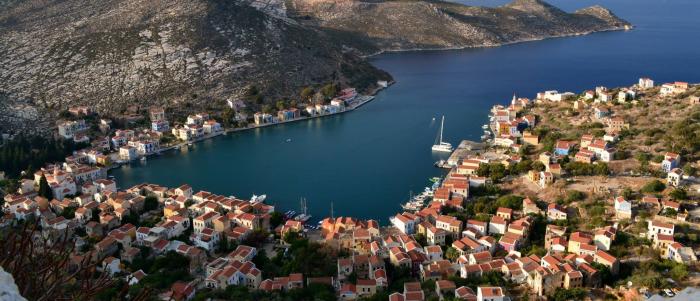
Island facts
Megisti is the easternmost and most isolated region of Greece, located 520 km from the mainland. The island is neither electrically interconnected, nor are there any relevant national plans for the future. With no RES installed as of today, all electricity is currently generated by a diesel thermal power station. Despite Megisti’s small size, electricity demand shows very high seasonality, mostly due to the large diaspora. Transport on the island relies almost exclusively on conventional vehicles, while transport to/from the island is handled either by ferries running on fossil fuel or through a small airfield connecting Megisti to Rhodes island. The heating and cooling needs of the islanders are mostly met with low-efficiency means.
The Municipality of Megisti applied to the Clean Energy for EU Islands Secretariat for Technical Assistance in March 2022, to develop a Clean Energy Transition Agenda (CETA), to acquire a strategic roadmap for the clean energy transition process designed by the local community. Now, through the participation in the 30, 100% renewable islands for 2030 initiative, Megisti aims to update and finalise its CETA with a vision of 100% RES for all aspects of the energy system, while following a holistic approach for the sustainable use of the scarce land and water resources of the island. The energy transition Trajectory, mostly in line with #REPowerEU objectives, refers to (i) RES generation and energy storage suitably sized for the demand’s seasonality, (ii) electrification of road and sea transport, and (iii) adoption of energy-efficient technologies for heating and cooling. Of utmost importance is the examination of participatory business models, including islanders and business, that will further allow the mitigation of energy poverty and the facilitation of self-consumption and active client schemes.
As part of the 30 for 2030 call the following activities are planned:
The preparation of a Clean Energy Transition Agenda (CETA) will involve support for updating and finalising the agenda for Megisti, which includes engaging the islanders and other local stakeholders. The CETA will incorporate projects proposed by the Megisti Transition Team, all aimed at achieving full decarbonisation by 2030.
Support for stakeholder engagement will focus on involving local stakeholders and islanders through their participation in workshops and various communication initiatives to embrace the trajectory actions. This includes potentially participating in the ownership and management aspects of projects, either directly or through the establishment of energy communities, as well as adopting private measures outlined in the projects, such as heat pumps, solar heaters, rooftop photovoltaic systems, energy efficiency measures for privately owned buildings, private electric vehicle chargers, the use of electrified public transport and micro-mobility solutions, and behind-the-meter storage.
Regulatory analysis will provide support for engaging with Central and Regional Governments, the Regulatory Authority, and the Distribution System Operator (DSO) to appropriately adjust the regulatory framework needed to implement the projects proposed by the Megisti Transition Team, which are essential for achieving the trajectory’s targets of 100% renewable energy sources. This regulatory support will focus on provisions for business models that enable cooperation between the Municipality or islanders and the Public Power Corporation. It will also consider remuneration and incentive schemes that take into account the island's high energy costs, energy security challenges, and small economic scale, requiring tailored solutions. Additionally, technical provisions will be made to alleviate any barriers to the island's energy autonomy.
Pre-feasibility studies will be conducted on topics prioritised by the local authority in parallel with the development of the CETA. These topics include the electrification of land and sea transport on the island and the development of charging infrastructure, off-grid renewable energy source microgrids to supply municipal buildings on neighbouring islands, floating photovoltaic installations in the island’s water reservoir, and alternative renewable energy siting studies.
Following the completion of the CETA and the pre-feasibility studies, feasibility studies will be carried out for the projects deemed to have the highest potential for a comprehensive clean energy transition. The prioritised projects will be categorised into three groups: energy autonomy through the integration of renewable energy sources, security of supply through the implementation of storage solutions, and energy efficiency measures in private and public buildings alongside the electrification of the transport sector.
